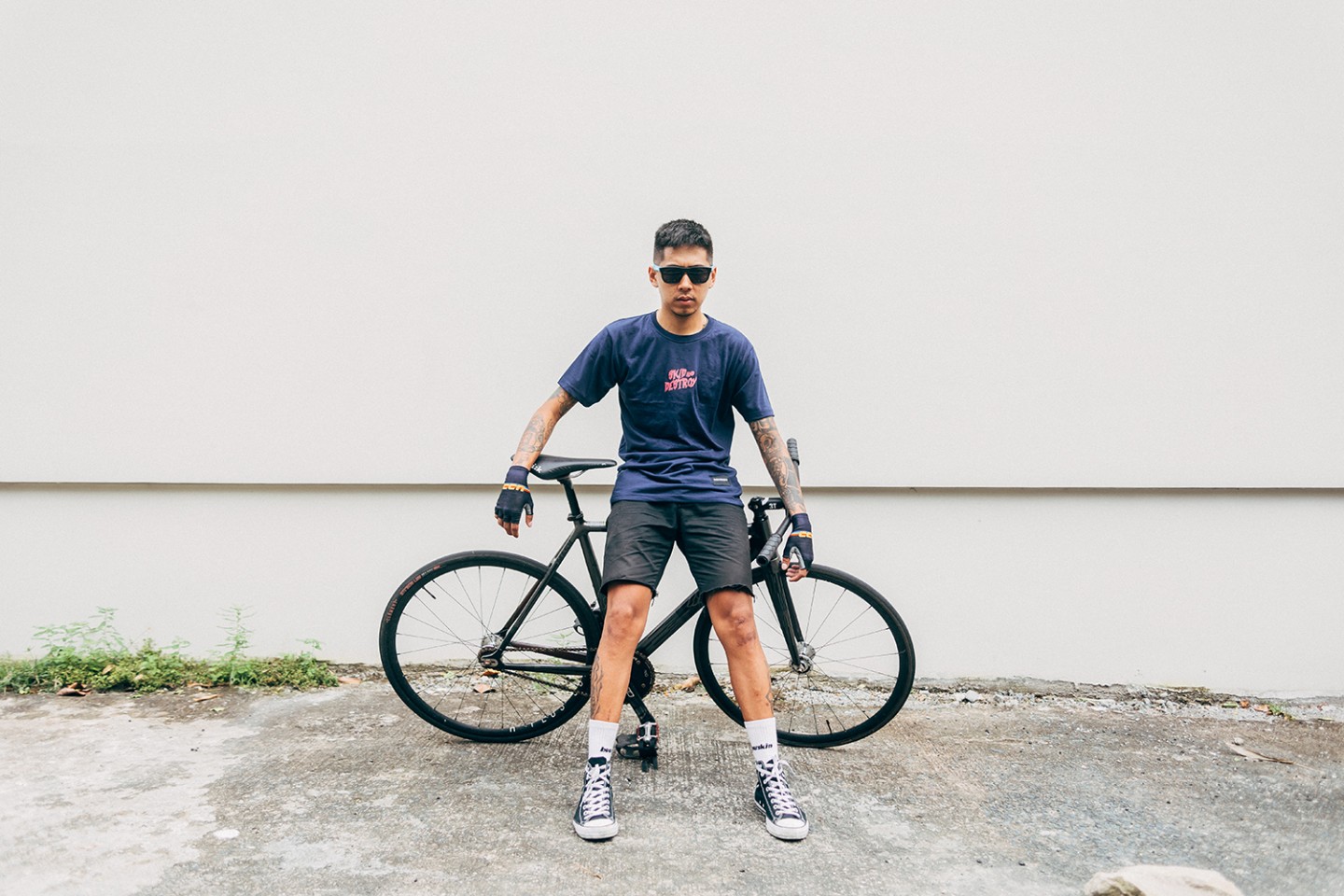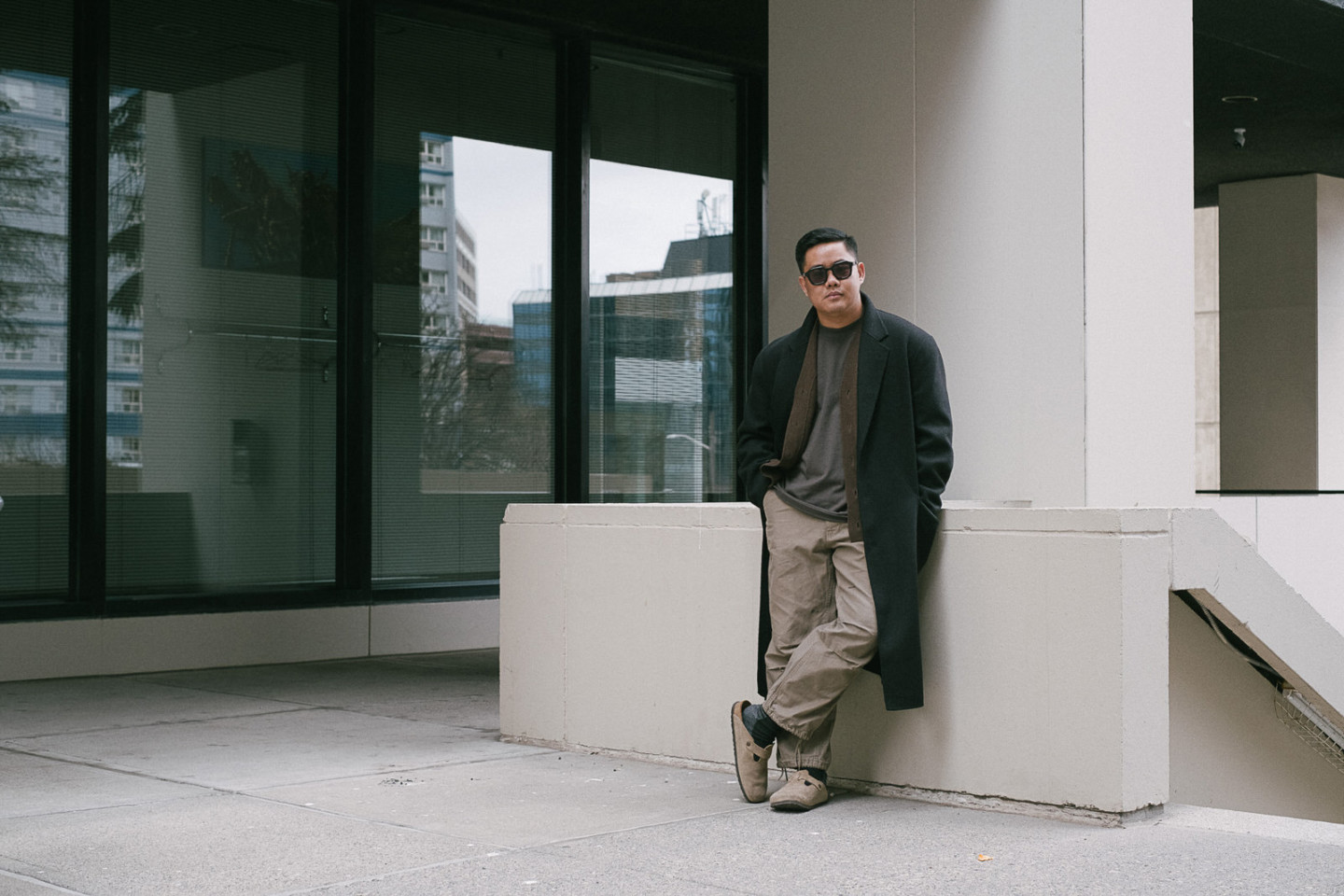
I first met Paulo Reyes several years ago, at one of PURVEYR’s Pursuit Fairs. At the time, he was working on his clothing label MHC. From working in film and advertising, to leading marketing roles at Commonwealth and Aesop, he has shifted focus to Monday Off, a growing creative agency behind projects such as the recent Dickies relaunch in the Philippines.
I recently had a chance to sit down with him over a call following his move to Canada, and we spoke about how Monday Off started, where it’s headed, and the foundations for what he’s doing and plans to do in the long run.
Read more of our conversation below.
Tell us a bit about yourself and Monday Off, for the readers who may not be so familiar.
I still get insecure when I’m asked this question because the path that led me to where I am now isn’t a very linear story. I would consider myself a generalist, which is something I’m still learning to be okay with. I want to be a very good generalist.
Monday Off is an independent creative consultancy that works at the intersection of strategy, culture, and design. I co-founded it a couple of years ago with two partners. One of them is Bryan [Sochayseng]. He’s been a friend for a long time. We connected because of streetwear; he used to do custom work on shoes before he became Chaiseng, the artist. As for Lex [Celera], I met him through Scout when he was Editor-in-chief. I had the pleasure of working with him and even contributed to Scout a few times.
During that time Bryan and I both had full-time jobs, so the rule was that any work we’d do together, we’d only do on a Monday. Then Lex joined us after he left Scout. We eventually brought in Nina and Kat around early 2021 when the work started to pick up.
It made a lot of sense. [They] added structure to the freelance stuff we were doing. They were already very good at what they were doing too: Kat had a lot of project management experience, and Nina was working a marketing job at a beauty company. We didn’t realize until it all started coming together that we were already an agency.
And so with our combined experiences from different fields, we are able to bring a fresh perspective through the Monday Off approach — commercially aware and culturally fluent.
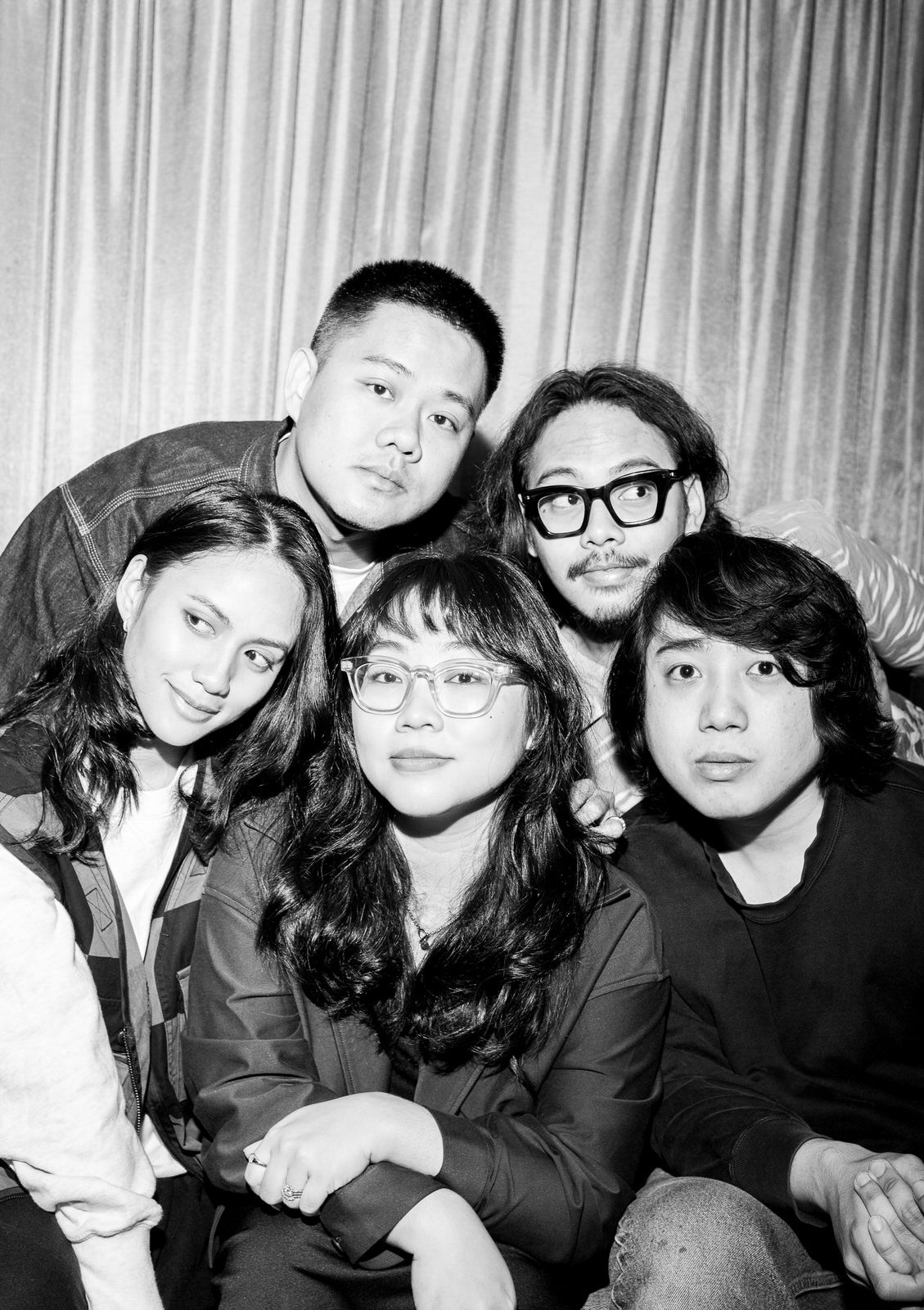
From left to right: Nina Carlos Reyes, Paulo Reyes, Kathrina Crisostomo, Bryan Sochayseng, and Lex Celera
Shot by Mac Villaluna
What do you mean by being a generalist? How do you think it has helped in pursuing Monday Off?
It took me a while to figure out what I really wanted to do. When I was younger, I thought I wanted to be an animator until I realized I couldn’t draw. I picked up graphic and motion graphic design only to be more interested in film. I went to school to become a documentary director, then landed a job as a copywriter at an advertising agency.
I think this all comes from a deep curiosity and desire to see everything from a wide variety of perspectives at any given time. I feel like this kind of thinking allowed me to approach problems with more empathy and connect dots that others might not easily see.
Monday Off is a tightly-knit team. We have no choice but to be really good generalists. We each have our roles we’re ultimately responsible for, but it’s not rare for an account director to jump in and help with art because they know they can provide value there.
Let us circle back a bit, when did Monday Off start?
We started around late 2018. Bryan and I launched the first Instagram post at a McDonald’s somewhere along Quezon City. I was still working in a communications role at my church, but also running a small clothing brand (MHC) and establishing an independent record label (Pushtrak) as side projects during my days off. As a creative, I was itching to do work that more people understood, or that could reach a wider audience. In some ways, I was doing MHC and Pushtrak for that reason: bridging what I was currently doing with what I wanted to do.
When I retired the brand and let go of the label, I started taking on freelance jobs as a strategist and copywriter. In some of those jobs, I’d be paired with Bryan. We loved working with each other and wanted to do that more often.
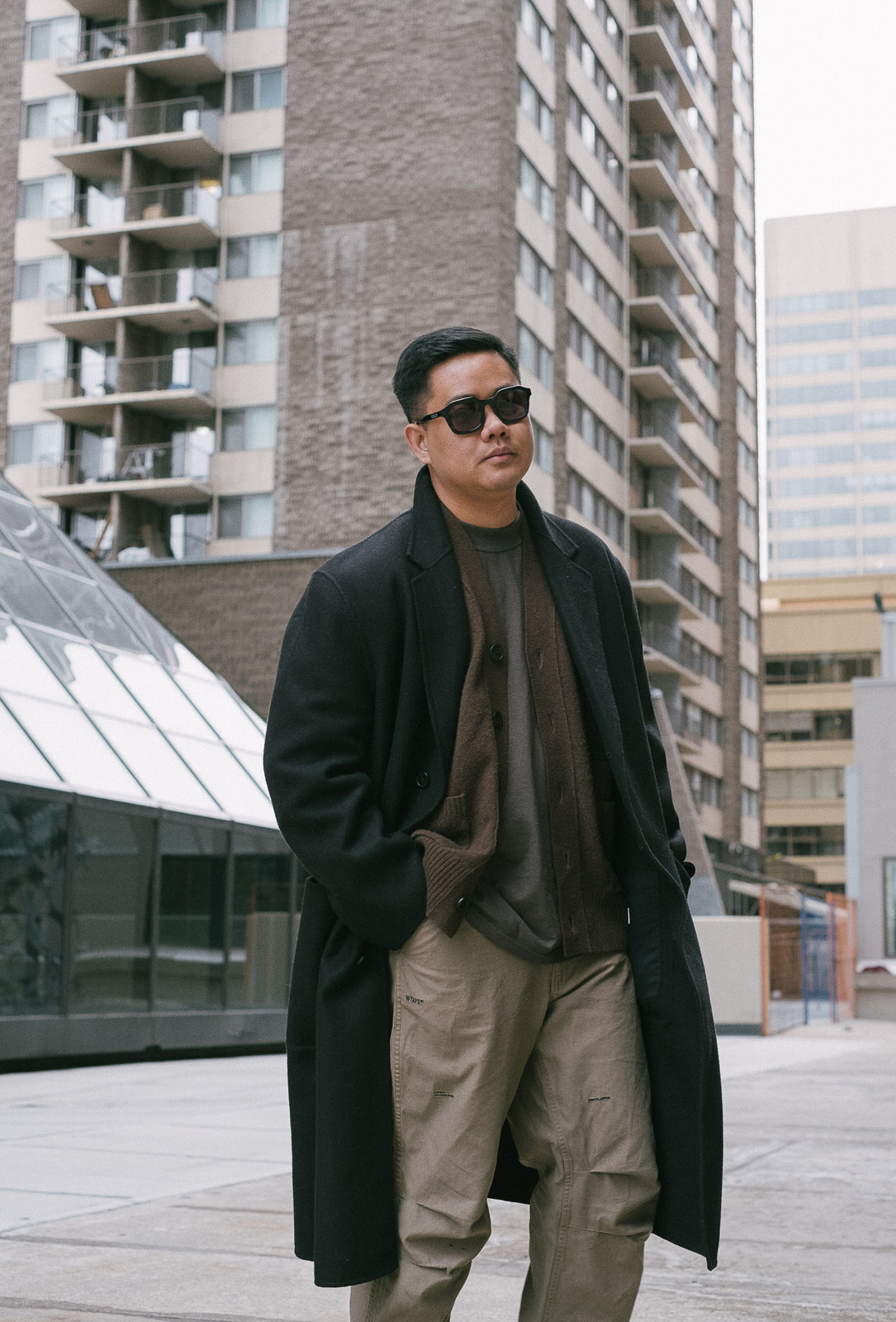
Photographer — Jay Avillanoza
And now, you moved to Canada to expand Monday Off’s operations, how has it been?
We really started taking things seriously around September or October of 2021 when we all left our full-time jobs to commit to this. Strategically, we just needed to be in the right place for expansion that we felt was coming in. By that point, we already had some clients in North America.
It all lined up: we wanted to see what was possible, and the time zones aren’t too far apart anyway. If you think about it, we have two Mondays–one in Manila, and one here in Canada. Now we’re a 24-hour service agency, which is fun. We don’t really lose any time, and it helps us work with our clients better.
Overall, it’s been going really well. In the few months since we got here, we’ve managed to connect with local independent agencies and see opportunities for collaboration. I’ve also been able to connect with the guys from LESS 17, who carry a very cool and diverse list of brands.
I’m really grateful for the team managing work back at home. Without them, there wouldn’t be a Monday Off. I’m also grateful for the tech that allows us to continue to work together seamlessly. No way running an agency from a different continent would be possible without the tools we get to use.
Would you say the shift to work from home setups has given you a better idea of how to do remote work?
Absolutely. We actually started off as a remote team because of the pandemic. We have a bit of a metaverse office setup on Gather and it works just like an office. It’s fun, but also really convenient. Kat and Nina put a lot of work into building our dream office and we’ve even been getting a lot of support from the Gather team who has introduced us to a couple of Filipino companies who are doing the same thing with a co-op space for other startups. It’s been really interesting to see how using the platform has opened up a lot of platforms for us already.
Also, as weird as it sounds, it feels like an actual space. We treat it like a home that we’ve built for ourselves, and the way it’s been set up follows some internal rules. There are even outdoor spaces. If you see someone there they probably want time alone, and if someone’s in the pantry they’re probably in their IRL kitchen and not at their real-life desk.
It’s also been really nice to see clients when we invite them over for presentations. Even after a year of working with them, we’ve never really met, but they’re driving go-karts around the office, and meetings are delayed because they’re still having fun touring the space.
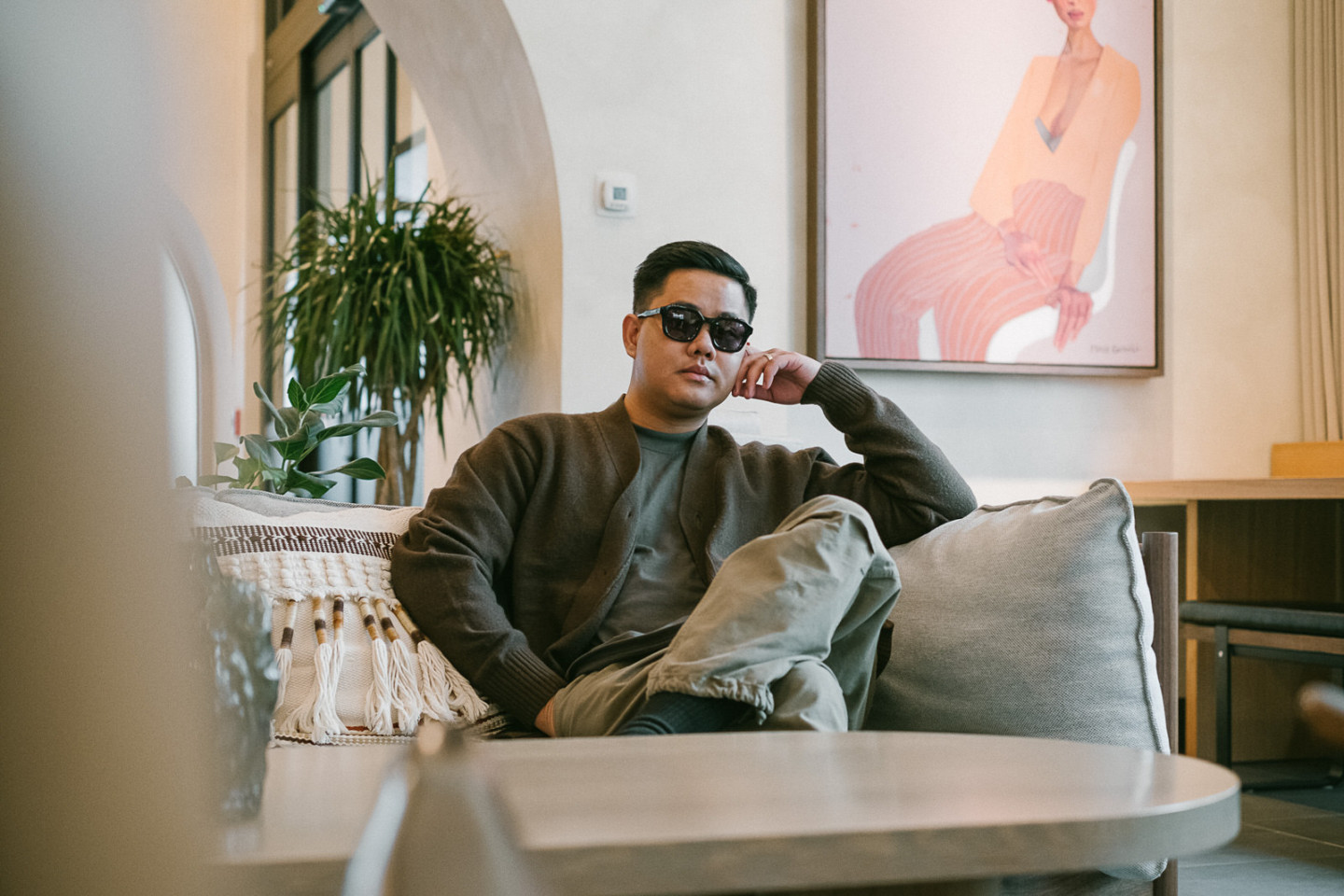
What are some of your favorite projects with Monday Off so far?
When I first applied to work in advertising agencies in 2012, I did a lot of spec ads for Dickies. I grew up wearing and admiring the brand because of its portrayal in culture. The thought haunted me in the years to come because I really wanted to see Dickies become what it was in other markets, as compared to what it was before the relaunch. Around 2020, we were invited to pitch for a “heritage clothing brand” and we approached it as we were pitching for Dickies without expecting anything and it worked out.
We’re very proud of the launch campaign and relieved to see it do much better than we expected. We were quite worried as we felt there was a responsibility to connect with the community that already loved the brand while bringing new people into the fold. Some of the discussions at the beginning were a little tricky to navigate, but we ultimately decided that we wanted it to be really Filipino and also really aspirational. Ryle [Uy] did a great job bringing it to life.
That’s when I also learned that good work is just a result of choosing the right people and letting it rip. Clearly communicate the idea to the right people and let go. It all came together.
Another thing we really loved about working on Dickies was being able to highlight great people from the community through the “Makers” campaign. I never thought I would have been able to do a project with [the likes of] Omar Baliw. I really look up to him and how hardworking he is. We also had Waiian, Flo [Trinidad], Thysz [Estrada], and Indio from Slick Barbers—a band of accomplished people from different fields, who have been working on things for a long time.
It’s been nice working with different people. We’re really proud that we’re able to do this full-time now. We’re also really fortunate to have gotten to this point during a global pandemic. As partners, the goal was to do something we love while having a larger say in how our time is spent, or when during the day we’ll get our work done.
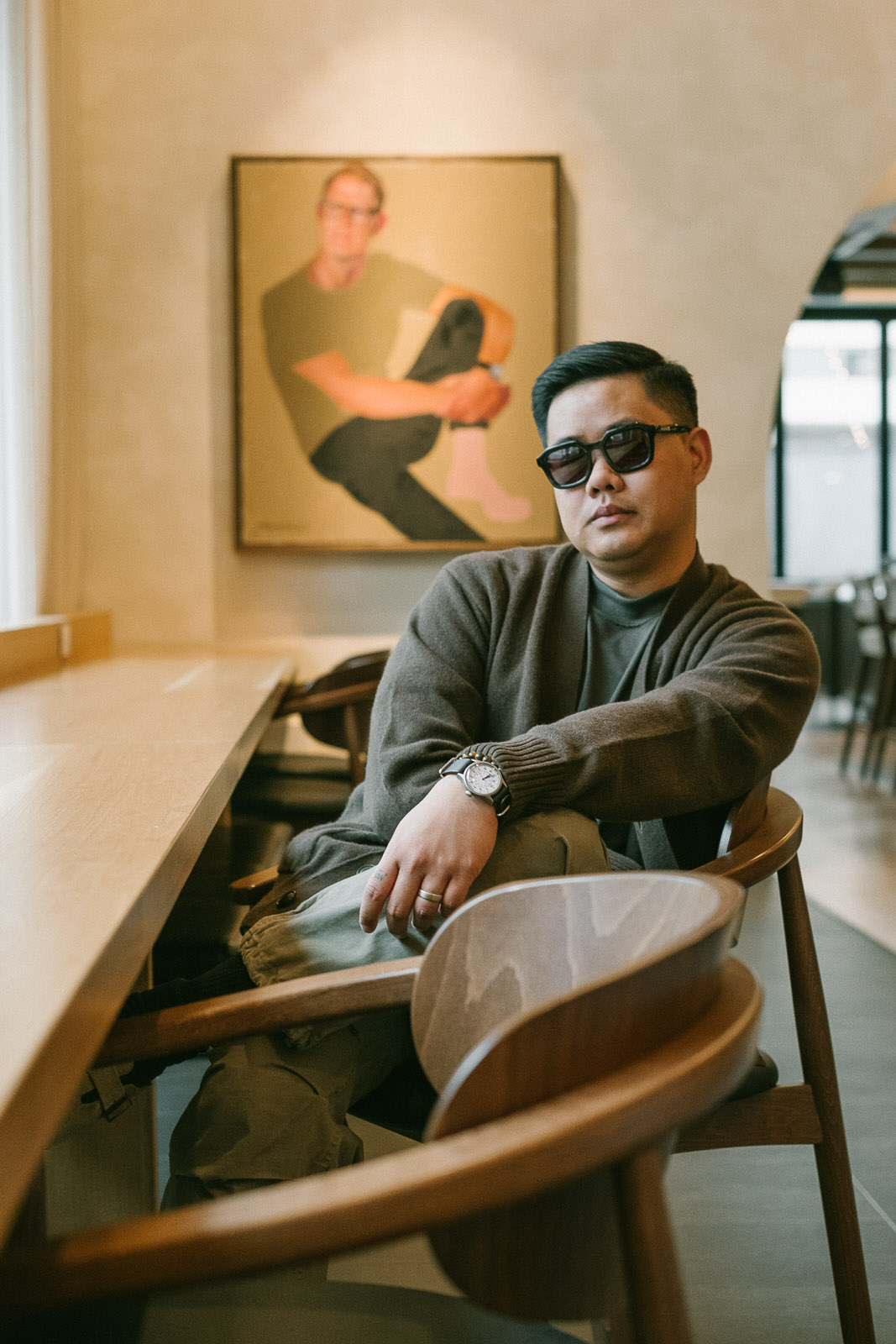
What do you think are some good ways to market a brand or design? Any examples you’ve liked lately?
I think there’s going to be a return to fundamentals in the next few years. The focus will be on getting the right product to the right people through the right channels in the most effective way. But with brands making moves in Web3 and building out metaverses, those fundamentals are going to look very different. And there’s a tendency to forget what the real objectives are and do things just to look cool. While there’s space for that, brands need to start building the foundations for the long-term strategy moving forward.
For me, I get a kick out of seeing the business of our clients grow, which is something I always keep in mind as a creative and now a business owner. The work we come up with isn’t always cool for the sake of being cool, but sometimes it’s seemingly boring things that make a difference in the bottom line—a tweak in their customer experience journey, a B2B opportunity, a partnership that makes sense. It’s seeing them do well that makes us happy, and that’s really important to me.
I also used to be quite possessive of my ideas, and I took it personally if a brand didn’t want to do something I pitched. But the reality was that I needed to take a step back and see if it was what the brand really needed at that point in time. They’re spending their money on us and we need to be responsible for that.
You run the Monday Off Instagram page like a media channel and also run a podcast show, Monday Off Radio. What made you position the agency with an eye on media?
Lex and Bryan worked in media before coming to Monday Off and I’ve written for a couple of publications (including PURVEYR) in the past few years. It’s fun to talk about the things we love, and being able to bring other people in as a listener is a great way to build connections. There was no discussion regarding the “content strategy” of our Instagram account, we all have access and post whenever we come across something cool.
The podcast is just an excuse for us to hangout and run our mouths. Work gets difficult and overwhelming. There are times we get at each other’s throats. The podcast is an intentional, set time to come together and remember that we’re friends first before partners and that there’s more to talk about than work. It’s chaotic most of the time and I wouldn’t have it any other way.
Speaking of media, what have you been keeping an eye on lately?
My media diet has been a bit of a mess, but I’ve been reviewing The Outline again. They did really good work, but sadly they shuttered around early 2020 when the pandemic hit. The archive is still there, and I look at it on my computer—not on my phone—because the site’s design is just incredible. Their articles are also just so, so good. It was one of the last publications that really excited me. I’ve also been following newsletters on Substack from some of my favorite writers.
It seems like that nowadays creative agencies are transitioning to become entities with unique voices, and from what you shared, Monday Off seems like a good example of that. How much of your own and the team’s interests are integrated into the work?
We’re fortunate enough to have the work that we do come together with our interests, and we want that to come out in the work. After we launched this local project with a global skate brand, some people reached out and asked if we were the ones behind it because they said that there was no one else who would’ve been able to connect those dots. To have people recognize our work before we say anything about it is the cherry on top of the value we’re already providing to both brands and their community.
It’s nice to see a little personality from our peers. It’s different for every client, but as a business owner myself, I’d like to know that I’m working with good people who share the same interests as me. If we’re going to be in the trenches together, we should at least be able to have a beer right? We’ll suit up when we need to, but on a regular basis we come as we are.
What else keeps you busy nowadays, if anything?
Moving to Canada actually turned into an opportunity to study again, and that’s what I’ve been busy with at the moment. I don’t have formal education in business or marketing. I’ve learned that you can fake it ‘til you make it up to a certain point. Then after that, you really need to know what you’re doing. In some ways, it’s me justifying the trajectory I’ve been on but more importantly giving myself a proper foundation for everything I want to accomplish.
So I guess that’s my media diet for the next few months—Microeconomics, Business Communication, Introduction to HR… [laughs]
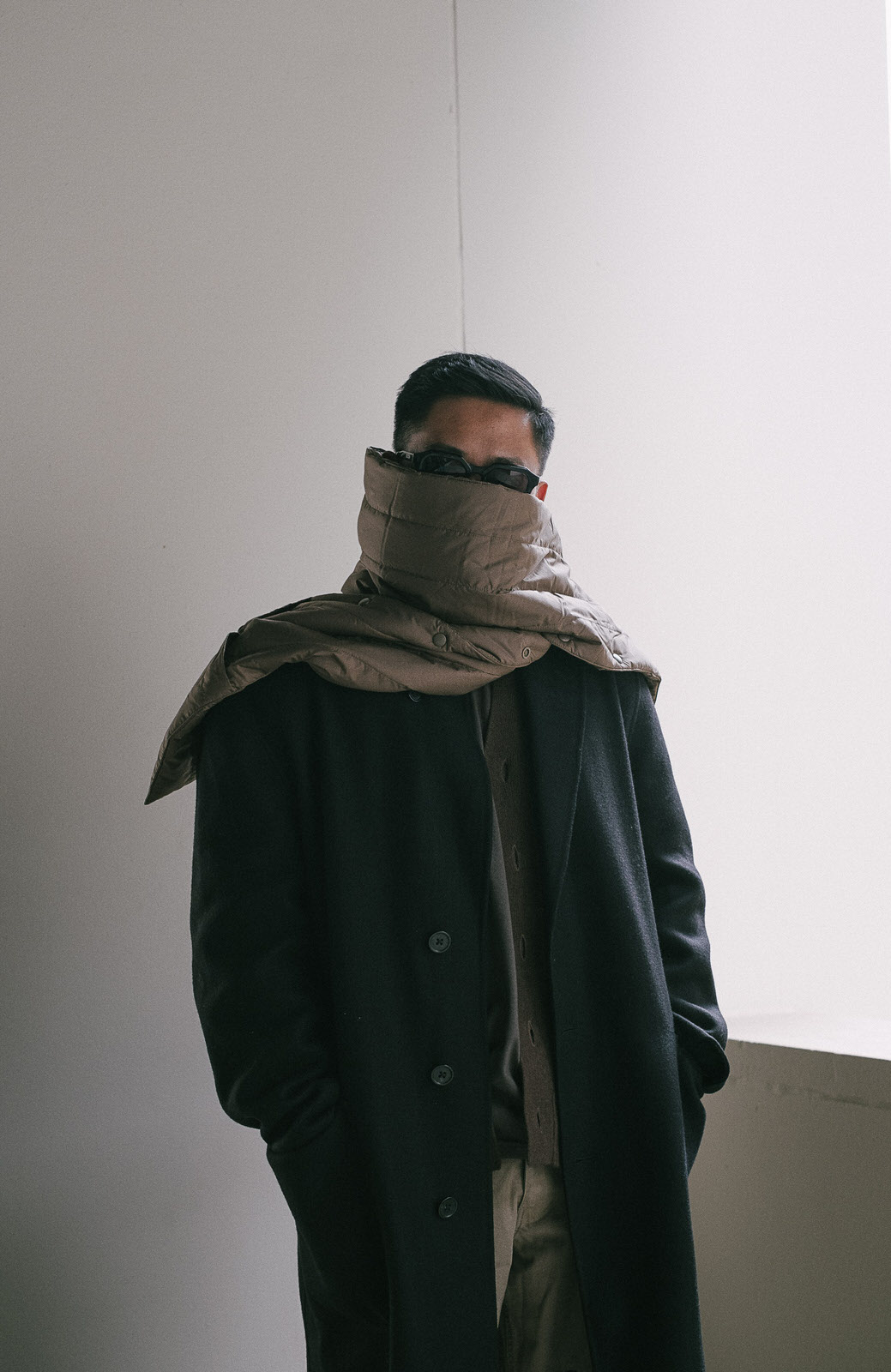
SUPPORT PURVEYR
If you like this story and would love to read more like it, we hope you can support us for as low as ₱50. This will help us continue what we do and feature more Filipinos who create. You can subscribe to the fund or send us a tip.




